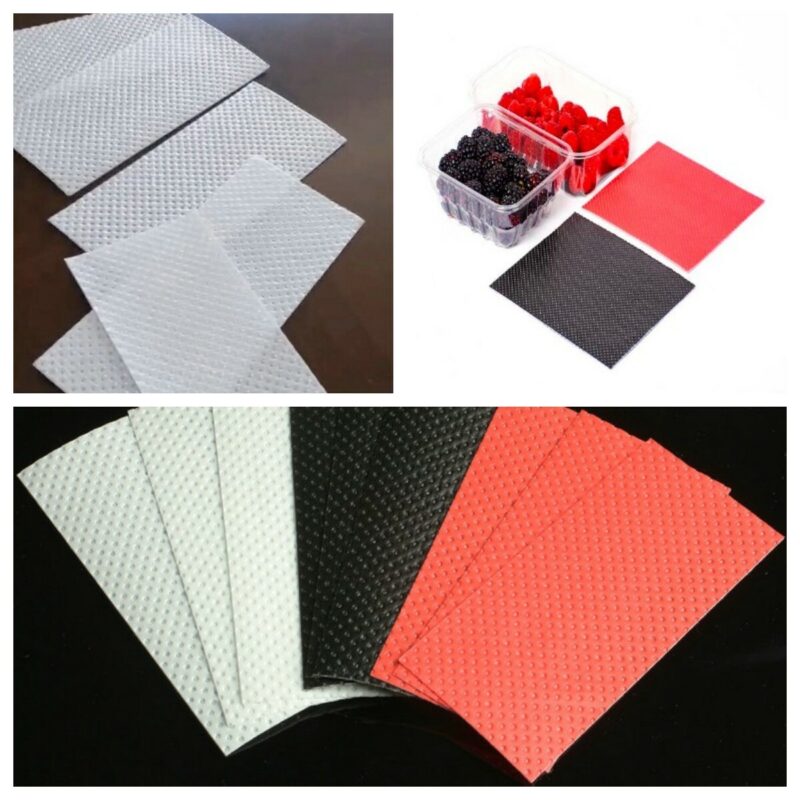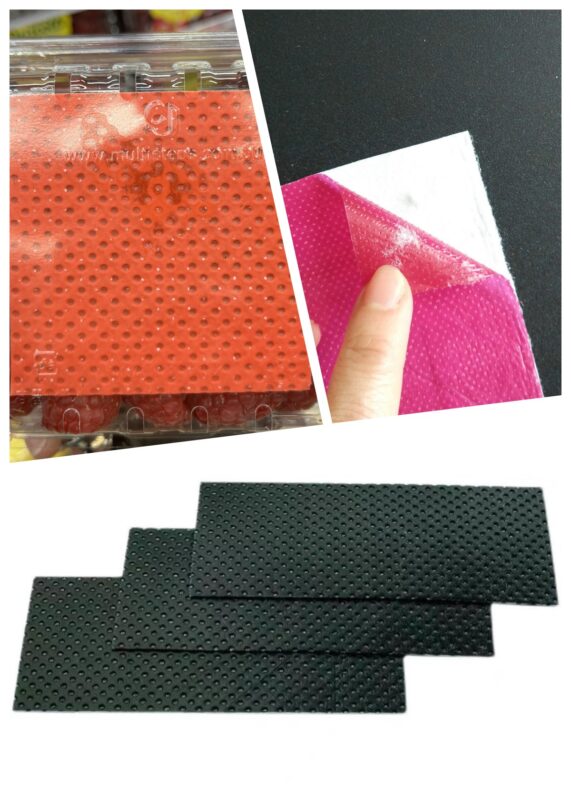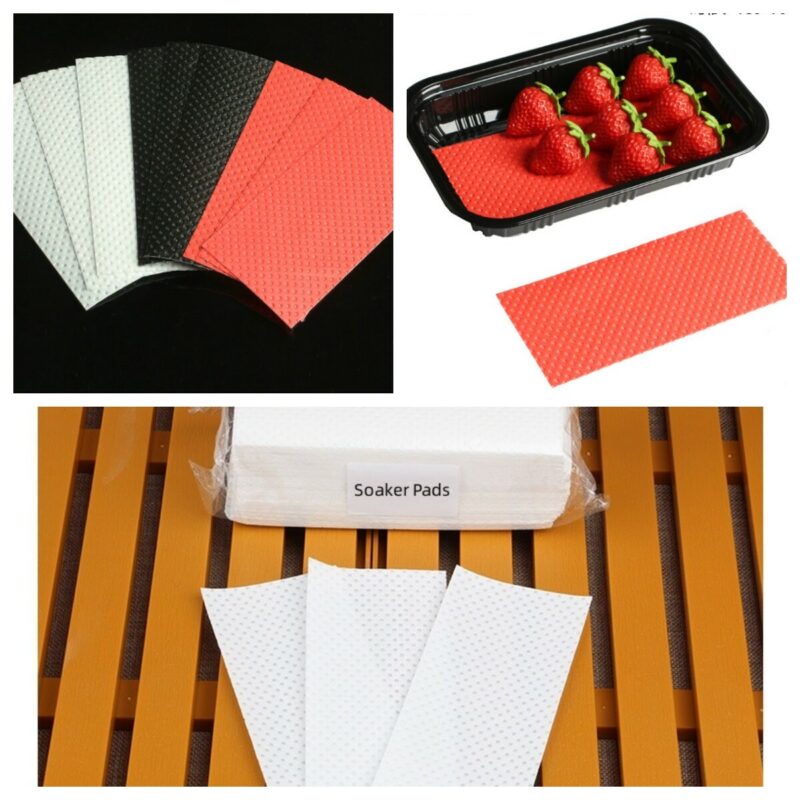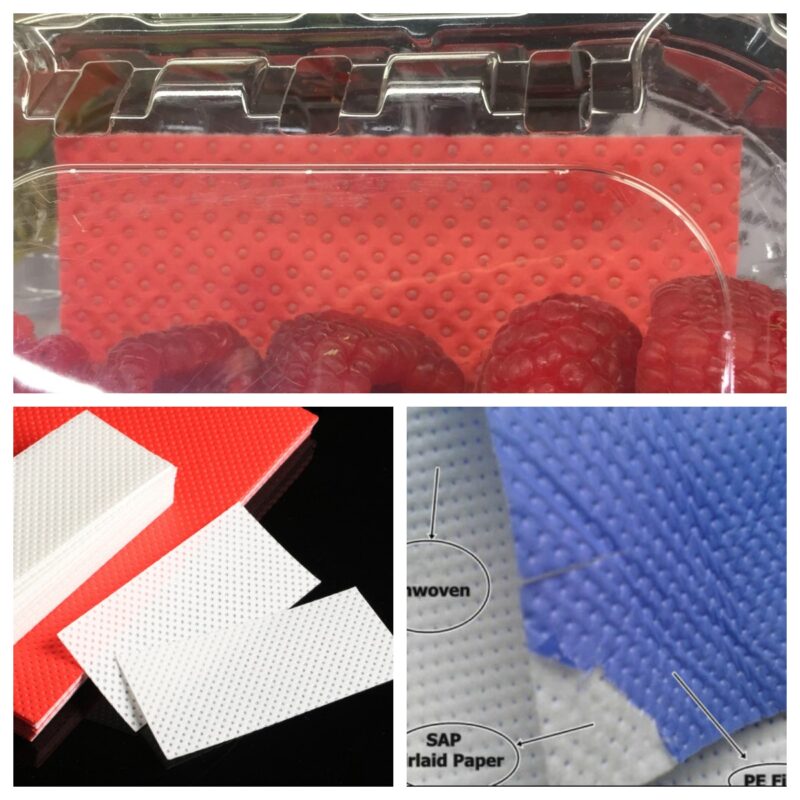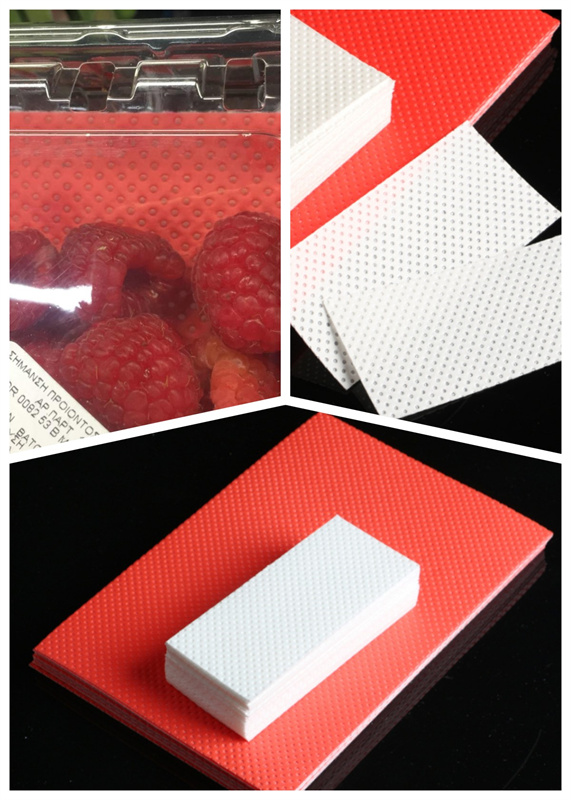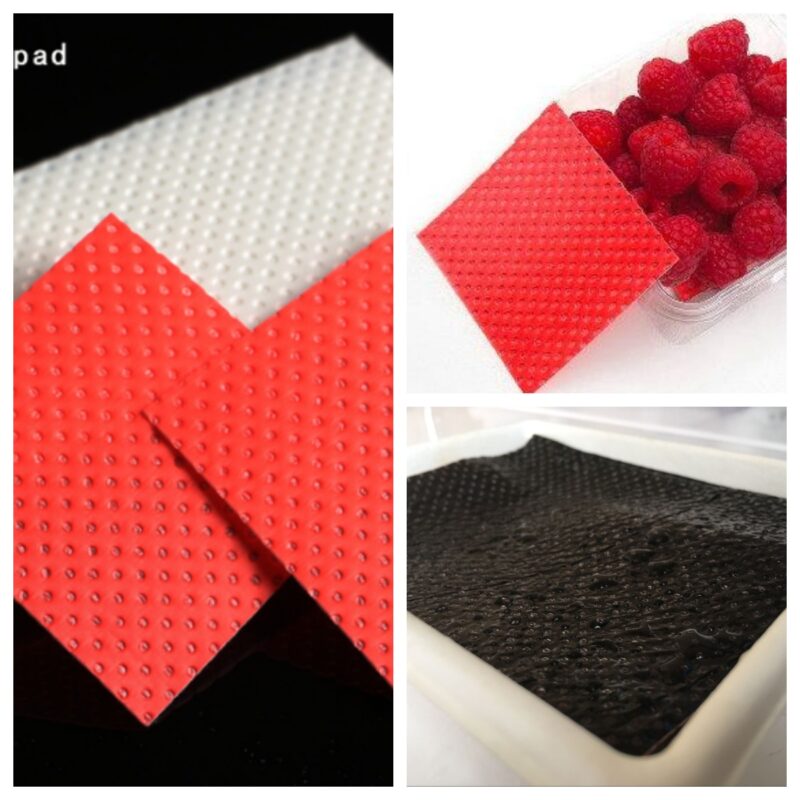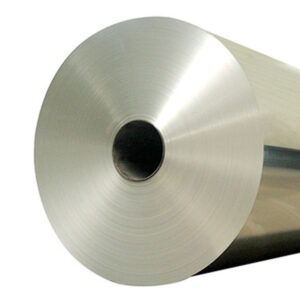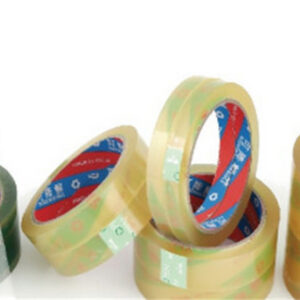Introduction
In the wake of improving living standards and escalating demands for food safety and quality, food preservation technology has been continuously evolving and innovating. Among these innovations, the Soaker Pad fruit, as a significant preservation tool, has carved out a vital role in fruit packing. This article delves deep into the characteristics, application areas, and material composition of the soaker pad, offering readers an exploration of the new horizon in preservation technology.
I. Characteristics of Soaker Pad
As the name implies, the soaker pad is a type of pad that can absorb moisture from the bottom of the packing. While the moisture of the fruit itself won’t be influenced. Its main characteristics include:
1. Outstanding Water Absorption Performance:
The soaker pad utilizes advanced moisture-absorbing materials, primarily composed of polyethylene and wood-pulp cellulose. Polyethylene, a high-molecular-weight material, exhibits remarkable water absorption capabilities, promptly soaking up moisture from the surface of food. This helps maintain the food’s humidity, slow down water evaporation, and effectively extend the shelf life of the food.
2. Microperforated Design:
Woodpulp cellulose, another essential component of the food freshness absorbent pad, features a microperforated design. This design enables the pad to absorb and “hold” the extra liquid inside. This prevents food from dipping inside the liquid full of bacteria and extends the shelf life.
3. Environmentally Friendly and Health-conscious:
The materials used in the fruit soaker pad, polyethylene, and wood-pulp cellulose, are certified safe for food or human health. Using this absorbent pad helps reduce the use of plastic packaging materials, lessening the environmental burden.
4. Diverse Sizes and Shapes:
The soaker pad can be customized in various sizes and shapes to suit the specific needs of different foods, such as produce crates, meat trays, and more. This customization ensures a thoughtful preservation solution for various types of food packaging.
II. Application
As an efficient food preservation tool, the soaker pad finds extensive use across various application areas:
1. Freshness Preservation — Soaker Pad Fruit:
Fruits and vegetables typically have high water content, making them susceptible to dehydration and spoilage during storage and transportation. The soaker pad fruit can absorb excess liquid, slow down water loss, and maintain the freshness and texture of fruits and vegetables.
2. Preservation of Meat and Seafood:
Preserving meat and seafood is crucial for food safety. The application of absorbent pads helps soak up blood and juice from the bottom of the meat and seafood packing, keeping them dry, reducing bacterial growth, and prolonging shelf life.
3. Ready-to-Eat and Cooked Food Preservation:
Ready-to-eat and cooked foods often require moisture retention to preserve their original taste and quality. The absorbent pad maintains humidity while preventing excessive moisture buildup, ensuring the quality of cooked food.
4. Freshness Preservation for Baked Goods:
Baked goods like bread and cakes tend to become hard due to moisture loss. The food freshness absorbent pad absorbs surface moisture, maintains the softness of baked goods, and extends their freshness.
III. Material Composition of Soaker Pad Fruit
Polyethylene and wood-pulp cellulose are the primary material components of the soaker pad fruit, collectively contributing to its excellent performance.
1. Polyethylene:
Polyethylene is a thermoplastic resin commonly used in plastic products. It boasts good processability, toughness, and chemical resistance. In the food freshness absorbent pad, polyethylene serves as the moisture-absorbing layer, rapidly soaking up surface moisture to prevent water evaporation and extend the food’s shelf life.
2. Wood-pulp cellulose:
Wood-pulp cellulose is a specialized type of paper commonly used in settings requiring high cleanliness and hygiene. In the soaker pad, the microperforated design of wood-pulp cellulose plays a crucial role. This microperforated structure allows the pad to absorb moisture and maintain hygiene and safely for the fruit at the same time.
IV. Usage Instructions and Precautions for Soaker Pad Fruit
The usage of the food freshness absorbent pad is relatively straightforward, but certain instructions and precautions should be observed to ensure food safety and preservation effectiveness.
1. Placement:
When using the food freshness absorbent pad, place it at the bottom of the food packaging container. This ensures full contact between the absorbent pad and the food’s surface, optimizing preservation results.
2. Food Types:
Different foods require distinct preservation approaches. When selecting the food freshness absorbent pad, choose the appropriate type based on the food’s characteristics. For instance, opt for pads with superior moisture absorption for fruits and vegetables, and those capable of absorbing blood and juice for meat and seafood.
3. Replacement Interval:
Over time, the food freshness absorbent pad becomes saturated and unable to absorb more moisture. Therefore, it’s important to replace the pad regularly to maintain preservation efficacy. The replacement interval can be determined based on the food type and storage environment.
4. Cleaning and Hygiene:
During pad replacement, ensure cleanliness and hygiene. If any residual juice or stains are present, clean them thoroughly before placing the new absorbent pad.
V. Environmental Significance of Soaker Pads
Against the backdrop of increasing environmental awareness, the food freshness absorbent pad, as a novel food preservation tool, holds significant environmental importance.
1. Reducing Plastic Waste:
Conventional food preservation methods often rely on plastic packaging, leading to substantial plastic waste. The use of eco-friendly materials in the food freshness absorbent pad reduces plastic consumption and diminishes plastic waste generation.
2. Extending Food Lifespan:
The application of the food freshness absorbent pad effectively extends the shelf life of food, reducing instances of food wastage due to spoilage. This contributes to minimizing food resource wastage, serving the cause of food security positively.
3. Energy Conservation:
The preservation efficacy of the food freshness absorbent pad reduces food loss, curbing the demand for food and subsequently lowering energy consumption in production, transportation, and storage processes.
Conclusion: A Promising Path Ahead
As a result of its innovative technology, the food freshness absorbent pad stands as a pivotal advancement within the contemporary food industry. This remarkable creation provides an efficient solution, amplifying both food preservation and quality, primarily attributed to its exceptional moisture absorption capabilities and its environmentally conscious attributes. Looking forward, as technological progress marches onward and society’s heightened focus on food safety and environmental consciousness continues to gain momentum, the food freshness absorbent pad is poised to assume an even more pivotal role within the realm of food preservation.
Moreover, this innovative tool is poised to bring forth a host of unparalleled advantages. With the continued march of technology, the food freshness absorbent pad will undoubtedly evolve and become an even more indispensable component of food preservation practices. Its presence promises to usher in greater convenience and herald sustainable environmental benefits into the lives of people. As it takes center stage, it will contribute substantially to the ever-evolving landscape of food preservation technology, seamlessly merging innovation with practicality.

